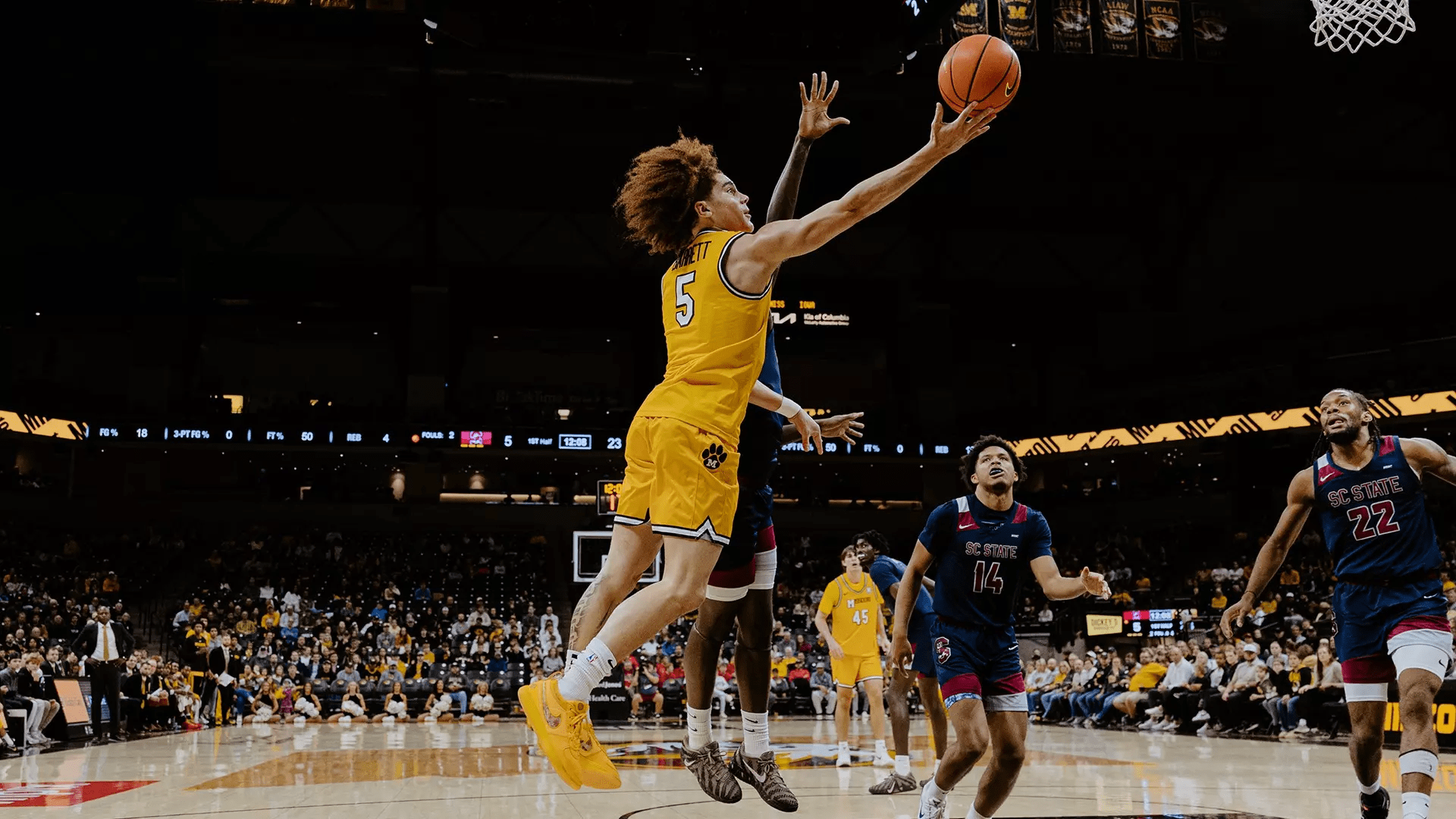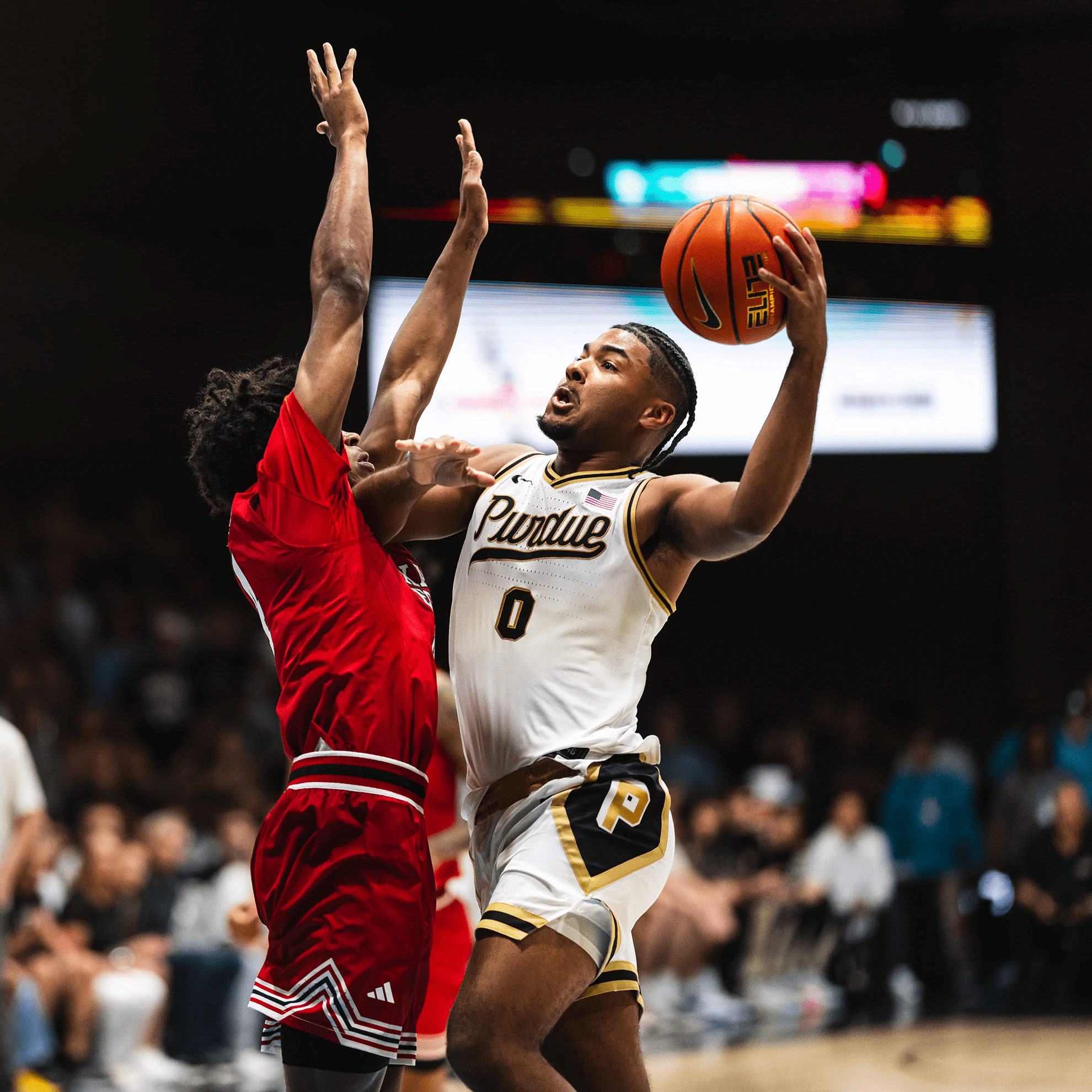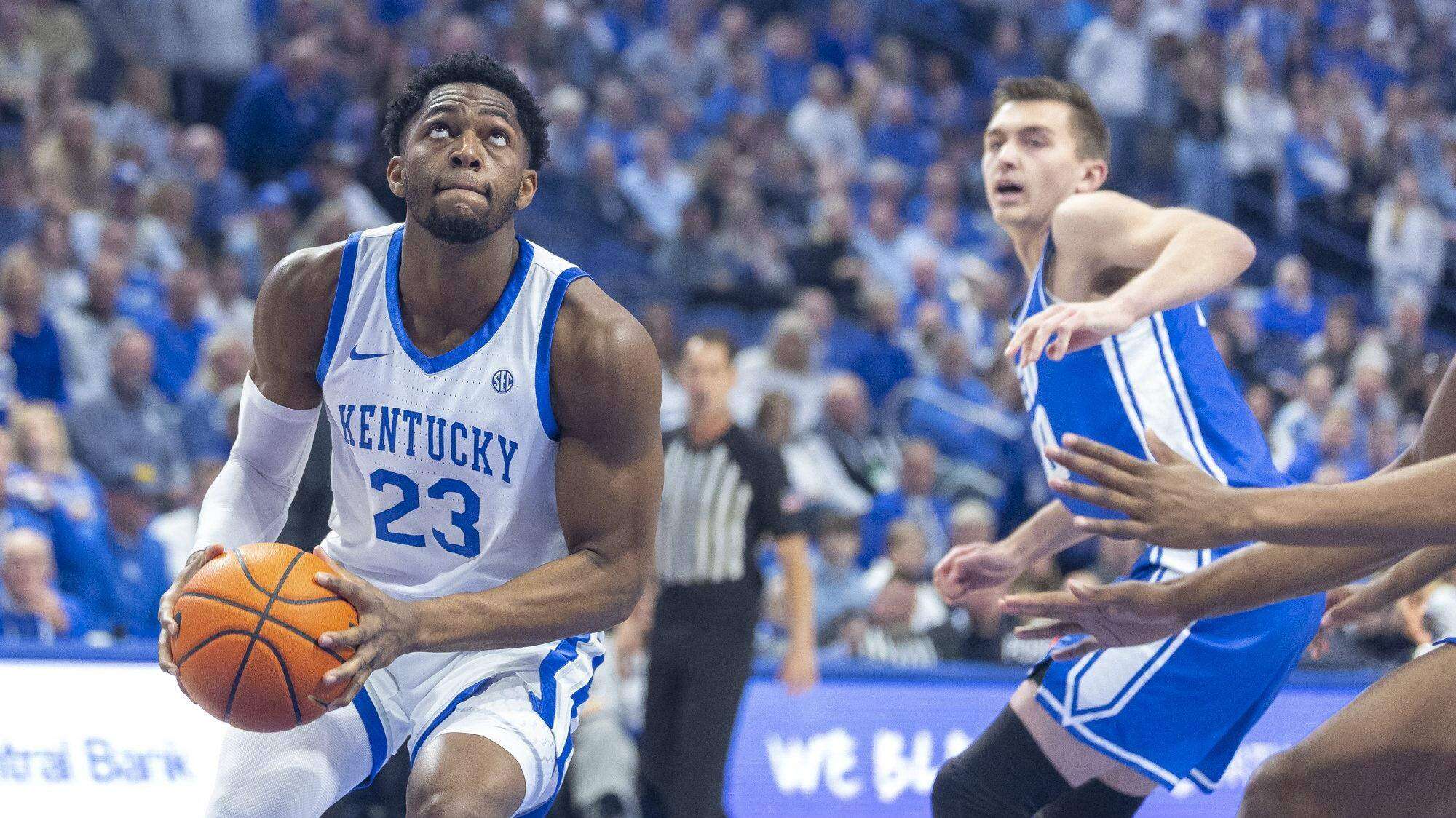Northeastern Huskies vs. Wake Forest Demon Deacons Advanced Game Analysis
Northeastern Huskies vs Wake Forest Demon Deacons Advanced Game Analysis – NCAA Basketball Nov.28, 2025 at 12:00pm ET Matchup

Northeastern Huskies vs Wake Forest Demon Deacons Advanced Game Analysis – NCAA Basketball Nov.28, 2025 at 12:00pm ET
Matchup Preview Table
| Team | Record | Points Per Game | Opponent Points Per Game | Avg Score Margin | Total Rebounds Per Game | Assists Per Game | Assists / Turnover | Effective FG% |
|---|---|---|---|---|---|---|---|---|
| Northeastern Huskies | 3-3 | 74.0 (#194) | 73.7 (#152) | +0.3 (#164) | 34.3 (#221) | 12.7 (#214) | 0.987 (#226) | 48.7% (#240) |
| Wake Forest Demon Deacons | 5-2 | 87.6 (#44) | 71.7 (#125) | +15.9 (#44) | 40.6 (#42) | 17.0 (#54) | 1.488 (#60) | 51.9% (#150) |
Quick Glance Summary Card
Game Snapshot =========================================== Form and Margin - Northeastern: 3-3, 74.0 PPG (#194), +0.3 margin (#164) - Wake Forest: 5-2, 87.6 PPG (#44), +15.9 margin (#44) 🔥 Offensive Level Northeastern ████████░░░░░░ 74.0 PPG (#194) Wake Forest █████████████░🔥 87.6 PPG (#44) Defensive Scoring Northeastern ███████░░░░░░░ 73.7 Opp PPG (#152) Wake Forest █████████░░░░░ 71.7 Opp PPG (#125) Rebounding Northeastern █████░░░░░░░░░ 34.3 RPG (#221) Wake Forest ██████████░░░ 40.6 RPG (#42) ✅ Playmaking and Ball Security Northeastern █████░░░░░░░░░ 12.7 AST (#214), 0.987 A/T (#226) Wake Forest ██████████░░░ 17.0 AST (#54), 1.488 A/T (#60) Headline: Wake Forest brings top 50 scoring, strong margin and a clear edge in rebounding and decision making. Northeastern must lean on toughness, steals and second half scoring to keep this within striking distance.
Team Identity Profiles
Northeastern Huskies Team Profile
Northeastern enters at 3-3 with a statistical profile that sits squarely in the middle of the national pack. The Huskies score 74.0 points per game (#194) while allowing 73.7 (#152), for an almost neutral average score margin of +0.3 (#164). That neutrality is reflected across most categories. Northeastern is not dramatically overpowered in any one area, but they also do not carry obvious top tier strengths compared with high major opponents. This matchup will test how well their balanced but modest profile translates against a Wake Forest team that pushes tempo and scoring volume.
Offensively, Northeastern is functional but not explosive. The Huskies post an effective field goal percentage of 48.7% (#240) and an overall field goal percentage of 44.3% (#178). Two point efficiency is reasonably strong at 53.0% (#146), which indicates they can finish at a decent rate inside the arc when they create clean looks. The major drag on their offensive efficiency is three point shooting. Northeastern hits just 26.7% from three (#335) on 19.3 attempts per game (#309), making only 5.2 threes per game (#338). That combination of low percentage and modest volume limits their ability to create high value scoring bursts from the perimeter.
The Huskies compensate somewhat by getting to the free throw line. Their free throw rate (FTA per FGA) is 0.406 (#103), which is comfortably above average, and they make 70.6% at the stripe (#199). They convert 16.8 free throws per game (#119) on 23.8 attempts (#107). When their offense is at its best, Northeastern uses physical drives and post touches to draw contact, convert inside, and get to the line. However, the free throw advantage alone is often not enough to offset a cold perimeter night, especially against a team capable of scoring close to 90 points.
In terms of creation and decision making, Northeastern is again middling. They log 12.7 assists per game (#214) and 12.8 turnovers (#204), for an assist to turnover ratio of 0.987 (#226). Assists per field goal made sit at 0.487 (#249), suggesting that nearly half of their makes come from assisted action, but they do not have a high end pass heavy style. The Huskies offense blends some structured sets with significant self creation. When their guards are efficient, the system looks solid. When those possessions end in difficult shots, the overall offensive output tends to stall.
Defensively, Northeastern has a mixed identity. They allow 52.0% opponent effective field goal percentage (#198) and 45.8% overall shooting (#216). Opponents shoot 52.7% on two pointers (#192) and 33.9% from three (#213). Those numbers describe a defense that is not porous, but not consistently suppressing shot quality either. The Huskies offset that somewhat with high disruption numbers. They record 9.0 steals per game (#41) and 11.2% steals per play (#33), while forcing 15.3 opponent turnovers per game (#43) and 19.0% opponent turnovers per play (#32). When Northeastern is at its best defensively, it is creating chaos, generating live ball turnovers and turning those into points.
On the glass, Northeastern is adequate but not dominant. They grab 34.3 total rebounds per game (#221), with 9.2 offensive rebounds (#190) and 21.8 defensive boards (#214). Their offensive rebound percentage is 27.9% (#205) and defensive rebound percentage is 74.0% (#116). Opponents collect 34.3 rebounds per game (#125), with 7.7 offensive boards (#67) and 23.7 defensive rebounds (#226). That hints at a relatively even rebounding battle in most games, but in this matchup the Huskies will face a Wake Forest team with a statistical edge on the boards.
Wake Forest Demon Deacons Team Profile
Wake Forest presents a far more assertive statistical identity. At 5-2 with 87.6 points per game (#44) and only 71.7 allowed (#125), the Demon Deacons sport an average scoring margin of +15.9 (#44). That combination of top 50 scoring and top 50 margin indicates a team that can both outscore and outclass opponents over extended stretches. Their resume points to a fast paced, attack oriented group that leverages both volume and efficiency.
The offensive framework is built on tempo, spacing, and versatility. Wake Forest attempts 68.0 field goals per game (#5), one of the highest rates in the country, and makes 30.6 (#32). With a field goal percentage of 45.0% (#156) and an effective field goal percentage of 51.9% (#150), the Demon Deacons are not just firing at will. They are taking many shots with reasonable efficiency. From three they shoot 34.2% (#144), making 9.4 threes per game (#65) on 27.6 attempts (#69). That combination stretches defenses horizontally and opens driving lanes.
Inside the arc, Wake Forest shoots 52.3% on twos (#166), solidly above average. Their shooting efficiency stat is 1.117 (#134), which reflects the effective blend of threes, twos and free throws. Speaking of free throws, they get to the line at a 0.340 FTA per FGA rate (#229), making 73.5% (#126). They average 17.0 free throws made (#114) on 23.1 attempts (#125). The offense is capable of scoring from all three levels, and the high shot volume ensures that short cold spells do not usually derail entire games.
Wake Forest is also strong on the glass. The Demon Deacons pull down 40.6 total rebounds per game (#42), split into 11.9 offensive boards (#39) and 25.6 defensive boards (#66). Their offensive rebound percentage is 33.7% (#76) and defensive rebound percentage is 71.0% (#188). Opponents manage 36.9 total rebounds per game (#219), with 10.4 offensive (#271) and 23.3 defensive boards (#201). Wake Forest generally wins or at least competes at a high level on the glass, and in matchups against smaller or less physical teams, their offensive rebounding can overwhelm.
On defense, Wake Forest is built to limit efficiency rather than to rely purely on gambling. Opponents shoot 39.8% from the field (#56) and 26.3% from three (#22), producing an opponent effective field goal percentage of 45.9% (#54). Opponent shooting efficiency sits at 0.994 (#52). These numbers describe a defense that challenges both the rim and the arc, making it difficult for opponents to find a comfortable scoring zone. Steals per game are a healthy 9.6 (#25), with 10.8% steals per play (#43), and they force 16.3 turnovers per game (#18) at an 18.4% opponent turnover per play rate (#46). That is a disruptive defense layered on top of solid shot contesting.
In the playmaking and ball control department, Wake Forest stands out. They distribute 17.0 assists per game (#54) against only 11.4 turnovers (#116), yielding an assist to turnover ratio of 1.488 (#60). Assists per field goal made are 0.556 (#116), reinforcing the idea of a coordinated offense that creates good looks through ball movement. Combined with their pace and spacing, these numbers depict a group that is difficult to rattle for long stretches.
Team Identity Snapshot Lists
Northeastern Identity Snapshot
- Balanced scoring with 74.0 PPG (#194) and nearly neutral margin at +0.3 (#164)
- Solid two point efficiency at 53.0% (#146) but severe three point struggles at 26.7% (#335)
- Relies on free throws and drives, 0.406 FTA per FGA (#103)
- High disruption defense with 9.0 steals per game (#41) and 11.2% steals per play (#33)
- Rebounding and assists slightly below national average, 34.3 RPG (#221), 12.7 AST (#214)
Wake Forest Identity Snapshot
- High tempo, high scoring offense with 87.6 PPG (#44) and 68.0 FGA per game (#5)
- Strong scoring margin of +15.9 (#44), indicating consistent control
- Efficient shooting at 51.9% effective FG (#150) and 34.2% from three (#144)
- Rebounding advantage with 40.6 RPG (#42) and 11.9 offensive boards (#39)
- Disruptive defense allowing 39.8% opponent FG (#56) and 26.3% opponent three point shooting (#22)
High Level Team Comparison
At a high level, this matchup pits a mid tier statistical profile against a high major team with clear top 50 traits in both scoring and margin. Northeastern’s numbers suggest a team that can hang around against similarly tiered opponents and leverage steals and free throws to win tight games. Wake Forest’s numbers, by contrast, suggest a group that not only wins but often does so by pulling away through sustained offensive pressure and an ability to generate extra possessions.
The most notable macro gaps are in scoring volume, rebounding, three point production and efficiency, and overall margin. Wake Forest scores nearly 14 more points per game than Northeastern while also defending at a slightly better level and rebounding significantly better. Northeastern will aim to narrow the gap with defensive disruption and free throw generation, but on paper the Demon Deacons hold substantial edges in almost every key pillar of modern efficiency.
Core Matchup Metrics: By the Numbers
Scoring and Margin
Points Per Game Northeastern ████████░░░░░░ 74.0 (#194) Wake Forest █████████████░🔥 87.6 (#44) Opponent Points Per Game Northeastern ███████░░░░░░░ 73.7 (#152) Wake Forest ████████░░░░░░ 71.7 (#125) Scoring Margin Northeastern █████░░░░░░░░░ +0.3 (#164) Wake Forest ████████████░🔥 +15.9 (#44)
Shooting
Effective FG Percentage Northeastern ██████░░░░░░░ 48.7% (#240) Wake Forest █████████░░░░ 51.9% (#150) Three Point Percentage Northeastern ██░░░░░░░░░░░ 26.7% (#335) Wake Forest ███████░░░░░░ 34.2% (#144) Two Point Percentage Northeastern ████████░░░░░ 53.0% (#146) Wake Forest ████████░░░░░ 52.3% (#166)
Rebounding
Total Rebounds Per Game Northeastern █████░░░░░░░░░ 34.3 (#221) Wake Forest ██████████░░░ 40.6 (#42) Offensive Rebound Percentage Northeastern █████░░░░░░░░░ 27.9% (#205) Wake Forest ████████░░░░░ 33.7% (#76)
Ball Pressure and Turnovers
Assists Per Game Northeastern █████░░░░░░░░░ 12.7 (#214) Wake Forest █████████░░░░ 17.0 (#54) Turnovers Per Game Northeastern ██████░░░░░░░ 12.8 (#204) Wake Forest █████░░░░░░░░ 11.4 (#116) Assist to Turnover Ratio Northeastern █████░░░░░░░░░ 0.987 (#226) Wake Forest ██████████░░░ 1.488 (#60)
Fouls and Free Throws
Free Throw Rate (FTA per FGA) Northeastern ███████░░░░░░ 0.406 (#103) Wake Forest █████░░░░░░░░ 0.340 (#229) Free Throw Percentage Northeastern ███████░░░░░░ 70.6% (#199) Wake Forest ████████░░░░ 73.5% (#126) Personal Fouls Per Game Northeastern ███████░░░░░░ 19.3 (#232) Wake Forest ███████░░░░░░ 19.4 (#239)
Style Matchup Summary
Stylistically, Northeastern wants a game that leans into its strengths in disruptive defense, free throw generation, and second half scoring, where they average 41.5 points (#116). Wake Forest, on the other hand, will be comfortable playing fast, generating a high number of shot attempts, and using its combination of three point volume, offensive rebounding, and ball movement to stretch the Huskies over forty minutes.
If the game turns into a fast paced, high scoring affair, the metrics suggest Wake Forest will be firmly in its comfort zone. Northeastern’s best hope lies in creating enough turnover driven scoring and free throw advantage to offset the Demon Deacons superior shooting and rebounding. That is a narrow path but not an impossible one if Wake Forest has an off shooting night and Northeastern punches above its usual three point baseline.
Advanced Metrics and Tempo Analysis
The advanced numbers give a clear picture of how tempo interacts with efficiency in this matchup. Wake Forest takes 68.0 field goal attempts per game (#5) and still maintains a solid effective field goal percentage of 51.9% (#150). Northeastern takes 58.7 attempts (#195) at 48.7% effective field goal percentage (#240). At baseline, that means Wake Forest is creating more shots and slightly better shots per possession.
Shooting efficiency, which combines field goal and three point impact, stands at 1.117 (#134) for Wake Forest and 1.067 (#206) for Northeastern. The gap is not extreme, but when layered on top of the pace difference and rebounding advantage, it becomes significant. Every incremental possession tends to favor the Demon Deacons because they both convert at a slightly higher rate and create more total attempts.
On the defensive side, Northeastern faces 54.2 opponent field goal attempts per game (#40) at 52.0% opponent effective field goal percentage (#198). Wake Forest faces 61.0 opponent attempts (#248) but holds them to 45.9% opponent effective field goal percentage (#54). That contrast shows a Huskies defense that allows efficient looks at a moderate volume, versus a Demon Deacon defense that allows lower efficiency despite higher volume. The latter profile is more sustainable against a wide array of opponent styles.
Shot Quality Differential 🔥
Shot Quality Snapshot ---------------------------------------- Northeastern Offense - 48.7% effective FG (#240) - 26.7% from three (#335) - 53.0% from two (#146) Profile: Adequate at the rim, very cold from outside. Wake Forest Offense - 51.9% effective FG (#150) - 34.2% from three (#144) - 52.3% from two (#166) Profile: Balanced, inside-out threats, high volume. Northeastern Defense - 52.0% opponent eFG (#198) - 33.9% opponent three point shooting (#213) Profile: Gives up efficient looks, more pressure needed on shooters. Wake Forest Defense - 45.9% opponent eFG (#54) - 26.3% opponent three point shooting (#22) Profile: Strong suppression of perimeter efficiency, disciplined schemes.
Wake Forest clearly owns the shot quality battle on both ends. They maintain better offensive efficiency while forcing opponents into lower efficiency outcomes. Northeastern’s offensive profile relies more on drawing fouls and finishing just well enough at the rim. If the Huskies three point shooting stays near its current 26.7 percent baseline, they will have difficulty matching Wake Forest shot for shot.
Rim and Perimeter Defense Split
Two Point Defense Northeastern █████░░░░░░░░░ Opp 2P% 52.7% (#192) Wake Forest █████░░░░░░░░░ Opp 2P% 51.5% (#161) Three Point Defense Northeastern █████░░░░░░░░░ Opp 3P% 33.9% (#213) Wake Forest ██████████░░░ Opp 3P% 26.3% (#22) Interpretation: - Inside, both teams allow efficient finishes, but Wake still rates better. - On the perimeter, Wake Forest is far more restrictive against threes, which directly targets Northeastern's biggest offensive weakness.
The perimeter defensive contrast is particularly important. Northeastern is already struggling from three, and Wake Forest has been one of the better teams in the country at contesting and limiting opponent threes. That means the Huskies cannot simply hope for normal regression to the mean from deep. They are facing a defense that is actively depressing opponent three point percentage.
Lineup Stability Index
Lineup Stability
Northeastern █████░░░░░░░░░ Roles reasonably defined, but reliance
on disruption can lead to volatility.
Wake Forest ██████████░░░ Strong core rotation, clearly defined
primary scorers and playmakers.
Wake Forest’s efficient assist numbers, rebounding distribution, and shooting balance suggest a stable hierarchy. Northeastern’s profile is that of a team still fine tuning its offensive identity, particularly on the perimeter, while leaning on defense to create game swing opportunities. Against an opponent as stable as Wake Forest, that dynamic puts extra pressure on the Huskies to hit their upper range outcomes in key categories.
Momentum Swing Index 🔥🔥🔥
Momentum Creation Potential
Northeastern
- 9.0 steals per game (#41)
- 11.2% steals per play (#33)
- 15.3 opponent turnovers per game (#43)
Profile: Can create runs through turnover fueled scoring and
second half surges (41.5 second half PPG, #116).
Wake Forest
- 9.6 steals per game (#25)
- 10.8% steals per play (#43)
- 16.3 opponent turnovers per game (#18)
Profile: Similar disruption, plus higher scoring ceiling and
rebounding strength to extend runs. 🔥
Momentum Index
Northeastern ███████░░░░░░ Capable of 6-0 or 8-2 spurts via steals.
Wake Forest ████████████░🔥 Built for repeated 8-0, 10-2 runs over 40 minutes.
Both teams can generate momentum through forced turnovers and steals. The difference is that Wake Forest has a much higher offensive ceiling to convert those disruptive moments into points and then stack runs over the course of the game. Northeastern can absolutely go on runs if Wake Forest gets loose with the ball or misses a cluster of shots, but the Demon Deacons metrics indicate that such sequences are more likely to be brief interruptions rather than lasting momentum swings.
Pace and Efficiency Battle
Pace is a key battleground. Wake Forest already plays at a high shot volume pace, and their offensive system is comfortable in that environment. Northeastern, while not extremely slow, will likely want to keep this game from turning into a track meet. A higher possession count tends to magnify the impact of Wake Forest’s scoring and rebounding advantages.
If the Huskies cannot slow the tempo, Wake Forest’s combination of threes, second chance points, and free throws likely leads to a scoring output near or above their 87.6 point average. In that case, Northeastern would need an outlier offensive performance, particularly from three, to keep up. Given their current 26.7 percent clip from deep, that is a tough ask against a defense that holds opponents to 26.3 percent from three.
Recent Form and Schedule Context
Wake Forest’s 5-2 record accompanied by a strong scoring margin suggests that they have mostly taken care of business. Their numbers do not look inflated by a single blowout or anomaly. Multiple games of high scoring, double digit wins and consistent defensive performance underpin their profile. When they see mid major or mid tier opponents, they tend to impose their preferred style.
Northeastern’s 3-3 record with a neutral scoring margin reflects a team that has been competitive but not dominant. They have enough quality to avoid blowouts against most peers, but they have not consistently demonstrated the ability to impose their will statistically. Their best games show the upside of their defensive disruption and interior scoring. Their worst games expose the three point and rebounding limitations that can show up when the matchup tilts against them physically or athletically.
Offense vs Defense Matchup Breakdown
Northeastern Offense vs Wake Forest Defense
Northeastern’s offense faces a difficult task against a Wake Forest defense that defends the three extremely well and contests inside the arc with discipline. The Huskies will likely prioritize driving actions, post touches and paint touches, since their two point percentage is solid and their three point percentage remains low. However, Wake Forest’s capacity to help and recover on the perimeter and close out smartly could choke off kick outs and force Northeastern into tough, contested twos late in the clock.
Northeastern will also need to take care of the ball. Their turnover rate at 12.8 per game (#204) combined with Wake Forest’s 9.6 steals per game (#25) and 16.3 opponent turnovers (#18) indicates that the Huskies are at risk of donating possessions if they become predictable or loose with passes. Any extended stretch of turnovers followed by made threes or transition buckets for Wake Forest can quickly break open the game.
Wake Forest Offense vs Northeastern Defense
On the other side, Wake Forest’s offense is well equipped to attack Northeastern’s defensive weaknesses. The Huskies allow 52.0 percent opponent effective field goal percentage (#198) and 45.8 percent overall shooting (#216), and they do not show a strong profile at either end of the shot spectrum. Wake Forest, with 30.6 field goals made per game (#32), 9.4 threes made (#65), and solid free throw production, can test Northeastern both inside and out.
Northeastern’s defensive strength is steal generation, but Wake Forest handles the ball relatively well with 11.4 turnovers per game and a 1.488 assist to turnover ratio. If the Demon Deacons play within themselves and minimize live ball turnovers, they should be able to steadily accumulate points through structured offense rather than needing to rely on chaotic stretches. The more often Wake Forest gets a shot up on each possession, the more their efficiency and rebounding edges are likely to show in the scoreboard.
Offensive Edge
Offensive Edge Meter
Northeastern ███████░░░░░░ 74.0 PPG (#194), 48.7% eFG (#240),
1.067 shooting efficiency (#206),
heavy reliance on free throws.
Wake Forest █████████████🔥 87.6 PPG (#44), 51.9% eFG (#150),
1.117 shooting efficiency (#134),
strong three point volume and tempo.
Net Offensive Edge: Wake Forest holds a clear advantage.
Defensive Edge
Defensive Edge Meter
Northeastern ██████░░░░░░░ 73.7 Opp PPG (#152),
52.0% Opp eFG (#198),
but 9.0 steals per game (#41).
Wake Forest █████████░░░░ 71.7 Opp PPG (#125),
45.9% Opp eFG (#54),
26.3% Opp three point shooting (#22).
Net Defensive Edge: Wake Forest, with more complete efficiency denial.
Key Tactical Battlegrounds
- Northeastern three point efficiency: Even a modest spike above 26.7 percent could help them keep pace for longer stretches.
- Turnovers created by Northeastern: The Huskies must turn Wake Forest over well above their 11.4 turnover baseline to generate transition scoring.
- Rebounding margin: If Wake Forest dominates the glass as expected, it will be hard for Northeastern to control tempo.
- Foul trouble on key Wake Forest players: Early fouls that force rotation adjustments could reduce Wake Forest’s scoring and rebounding edge.
Situational Angles and Intangibles
Intangibly, Wake Forest projects as the side more comfortable with expectation and pressure. Their statistical dominance in several categories points to a team that has figured out who it is and how it wants to play. Northeastern, coming in as an underdog, has the freedom to be aggressive and attempt to inject volatility into the game. That can be an asset if leveraged properly through early pressure and fearless shot selection.
Coaching adjustments will matter. Northeastern’s staff may try a variety of defensive looks, from extended pressure to packed lane schemes, to see what can slow Wake Forest’s rhythm. Wake Forest’s staff will focus on discipline, avoiding needless risks and trusting their advantages to emerge over time. If the Demon Deacons maintain composure and resist being baited into rushed decisions, their statistical profile suggests they will gradually tilt the game in their favor.
Key Players
Northeastern Huskies
For Northeastern, the backcourt and wings who handle creation duties are central to any upset blueprint. They must find ways to generate efficient two point looks while also identifying selective three point attempts that can fall at a higher clip than the team’s current 26.7 percent. Guards will need to balance aggression with care, as turnovers directly fuel Wake Forest transition opportunities.
In the frontcourt, Northeastern’s bigs must battle on the glass and defend without excessive fouling. Their team rebounding numbers at 34.3 per game (#221) and 27.9 percent offensive rebound rate (#205) indicate that they are not naturally dominant in that area. Against a Wake Forest front line pulling down 40.6 boards per game (#42), Huskies forwards and centers will need high motor performances to keep the rebounding margin manageable.
Wake Forest Demon Deacons
Wake Forest’s key players are spread across multiple positions due to their balanced scoring and rebounding contributions. Their primary scorers drive the pace with attacking instincts, hitting threes at a respectable clip while also getting downhill to finish or draw fouls. With 9.4 threes per game (#65) and strong two point efficiency, the leading scorers are always a threat to break the game open with a scoring burst.
The lead guard is also critical from a decision making standpoint. With the team averaging 17.0 assists and only 11.4 turnovers, the primary ball handler sets the tone for their secure possession profile. Forwards and bigs who clean the glass and finish plays at the rim further support a system where each player’s strengths are clearly integrated into the overall offensive and defensive schemes.
Coaching Impact
Wake Forest’s coaching staff appears to have implemented a system that blends high tempo offense, disciplined defense and strong rebounding fundamentals. The balance between three point volume, drives, and post touches is reflected in their shooting distribution and efficiency. Defensively, the emphasis on contesting threes while still challenging at the rim shows a modern understanding of where high value shots originate and how to suppress them.
Northeastern’s staff faces a strategic challenge, but they also have tools at their disposal. The Huskies ability to generate steals and force turnovers suggests a willingness to disrupt passing lanes and apply targeted pressure. Their free throw rate indicates a focus on attacking downhill and creating contact. To optimize their chances, Northeastern’s coaches may emphasize schemes that invite Wake Forest into lower quality shots and offensive sets that maximize trips to the line and at rim looks for their stronger finishers.
Risk Matrix and Scenario Tree
Scenario 1: Wake Forest Controls Pace and Glass - Tempo: High, many possessions and shots - Wake Forest near season averages in scoring and rebounding - Northeastern struggles from three and cannot keep up - Likely Outcome: Wake Forest multi possession win with margin in mid teens or higher Scenario 2: Northeastern Disrupts and Shrinks the Game - Tempo: Moderated, more half court possessions - Northeastern forces above average turnovers, lives at the line - Wake Forest three point shooting below usual level - Likely Outcome: Wake Forest still favored, but margin squeezes into high single digits or low teens Scenario 3: High Variance Shooting Night - Northeastern shoots significantly above 30 percent from three - Wake Forest has an off night from deep or at the line - Turnovers are roughly even and rebounding gap is modest - Likely Outcome: Tight game into the final minutes, upset chance increases but Wake Forest remains analytic favorite
In Game and Live Angle Notes
- Early three point numbers for Northeastern: If they start hot from deep, it changes the scoring calculus significantly.
- Turnover differential: A clear edge for Northeastern in this category might indicate that their defensive pressure is genuinely bothering Wake Forest.
- Offensive rebound count: If Wake Forest is clearly leading in second chance opportunities, it becomes difficult for Northeastern to offset the extra possessions.
- Foul distribution: Early foul trouble on key Wake Forest players could force rotations that soften their defensive and rebounding posture.
Simulation Model
Conceptually simulating this matchup across many iterations using the supplied metrics yields a pattern where Wake Forest secures a comfortable win in the majority of outcomes. Their superior scoring average, rebounding advantage, three point production and defensive efficiency define a higher expected value per possession. Over a large sample, those edges tend to manifest as consistent scoring separation.
Northeastern’s upset pathways are built on several correlated events. They need to shoot better than their baseline from three, maintain or increase their strong steal rate without surrendering too many fouls, and prevent Wake Forest from dominating the offensive glass. They also benefit from any atypically poor shooting night by the Demon Deacons. While each individual event is possible, requiring multiple to align simultaneously naturally lowers the overall probability of a Huskies upset.
Player Impact and Box Score Levers
- Northeastern three point line: Attempts and percentage will be a direct indicator of whether they can stretch the floor against Wake Forest’s perimeter defense.
- Wake Forest turnovers: If this number drifts well above their 11.4 average, the door opens for more Northeastern transition scoring.
- Total rebounds and offensive boards for Wake Forest: A strong edge here would likely correspond with sustained scoring pressure.
- Free throw attempts for Northeastern: A count significantly above their 23.8 attempts baseline would point to success in drawing fouls and attacking the rim.
Sponsorship and Sportsbook Context (bet105)
For the best odds on NCAA games like Northeastern vs Wake Forest, visit bet105, the top sportsbook with reduced juice, fast crypto payouts, and sharp friendly limits.
Final Forecast and Edge Summary
Bringing all the data together, Wake Forest holds clear advantages in scoring volume, shot quality, rebounding, and ball security. They excel at the very things that typically decide games between high major and mid major opponents. Northeastern is not overmatched across the board, but their primary statistical strengths in steals and free throw rate may not be sufficient on their own to overcome the cumulative edge that Wake Forest brings in pace, perimeter shooting, and interior play.
Northeastern’s most realistic avenue to hanging around is to create multiple pockets of disruption, stacking steals into quick scoring runs while simultaneously enjoying a better than usual night from three. If they can also avoid getting overwhelmed on the glass, the margin can stay manageable. However, if Wake Forest plays to its norms in shooting and rebounding, and limits turnover spikes, the Demon Deacons profile as the side more likely to create and protect a solid margin by the final buzzer.
Final Prediction
Projected Score: Wake Forest Demon Deacons 86, Northeastern Huskies 71
The expectation is that Northeastern shows stretches of competitiveness, particularly when their pressure defense generates turnovers and when they succeed in getting to the line. Over the full forty minutes, though, Wake Forest’s tempo, shot making, and rebounding should allow them to open up a multi possession lead and maintain it through the closing stages.
For the best NCAA basketball odds, visit bet105, the top sportsbook with reduced juice, fast crypto payouts and sharp-friendly limits.
Disclaimer
This analysis uses AI-assisted statistical research alongside human analysis and editorial oversight. Despite verification efforts, data errors may occur. Readers should independently verify odds, fighter stats, and records before betting. Projections are analytical estimates, not guarantees.








